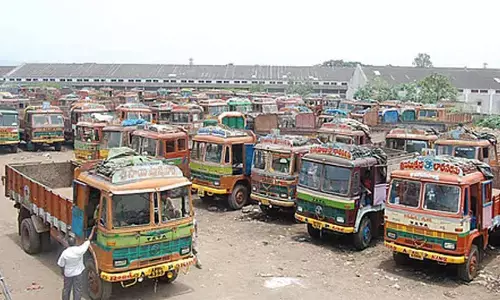The pressing need for clean energy revolution

The pressing need for clean energy revolution
The story of humankind is the story of energy
The story of humankind is the story of energy. As civilisation evolved over the ages, so did human ability to harness energy. During prehistoric times, before on-set of civilisation earlier humans were using fire as main source of energy. The use of fire for cooking and heating by burning mostly wood dates back to more than four lakh years. In addition, muscle power of animals was also being used for transport and even for driving chariots etc. For thousands of years, though civilisation was evolving slowly there was no change in energy use pattern.
It was in the 18th and early 19th centuries, the first change of energy use pattern evolved from coal, when Industrial Revolution started in Europe, due to technological advances which led to inventions of steam engine, electricity, railways, cars and lighting bulbs etc.
In the year 1859 the first oil-well was dug in Pennsylvania, USA and subsequently from middle of 20th century second stage of change in energy use pattern has evolved with more and more discovery of petroleum oil. In 20th century oil became the most ubiquitous form of energy and the modern world has started revolving around the oil and natural gas. The statistics show that the coal completely dominated energy use in nineteenth century. The use of oil got prominence after middle of 20th century and by the end, it accounted for about 50 per cent of total fossil fuel consumption, coal was at 30 per cent and rest was natural gas.
The use of fossil fuels has become a necessity in day to day lives of human beings throughout the world. Because of large scale use of fossil fuels and emission of greenhouse gases, the globe is facing serious climate crisis.
To cite few examples of climate change related events in the recent past. Bushfires in Australia started in the end of 2019 and continued till early 2020, though it might have been caused by lightning and arson but were mainly exacerbated by the hottest and driest Australian summer on record. This has caused deaths, devastation and displacement of not only humans but also numerous animals.
Back to India, in May 2019, cyclone Fani struck Bay of Bengal, severely impacting Odisha and West Bengal, causing several human lives and evacuating more than 1.5 million people.
Similarly, in August 2019 due to incessant rains leading floods in Kerala taking toll of more than hundred human lives, evacuating more than two lakhs people and Kochi Airport was shut down for few days due to water logging. Therefore, the impacts of climate change are known throughout the world, there is urgent need to the world leaders to declare a "state of climate emergency". If we don't change the course, we may be headed for a catastrophic temperature rise of more than three degree Celsius this century. To check the catastrophic effects of climate change, we have to change our energy use pattern.
Globally, renewable energy accounts for nearly one-third of the total installed electricity capacity. While hydroelectric energy accounts for 50 per cent of this capacity, solar and wind energy together accounts for another 45 per cent. At the end of 2019, worldwide wind power installed capacity was 623 gigawatt (GW) and that of solar power installed capacity was 586 GW. China is the leader in investment in renewables, it leads in electric transportation, solar photovoltaic (PV) manufacturing and installations, wind turbine manufacturing and installations. It has 204 GW of installed solar capacity and 210 GW of wind capacity. By 2050, China's total installed capacity in wind and solar power is expected to reach 1 terawatt (TW) each. By 2050 China's coal-fired power generation will decline substantially.
Germany has decided to stop burning coal for making electricity by 2038, and switch on to renewables, though as of now it produces 40 per cent of its electricity from coal. In the UK, wind power is the main contributor to renewable energy production. Scotland produces enough renewable energy to power its homes and businesses without fossil fuels. Though number of countries have switched on to renewable energy but at present significant amount of renewable energy is being generated by Iceland is the world's leader in renewable energy generation and produces more electricity per person than any other country in the world. Norway produces 98 per cent of its energy from renewables.
Uruguay has significantly reduced its carbon footprint because of encouragement to public and private sectors to work together. Sweden has planned to eliminate use of fossil fuels by 2050 and is going to switch over to solar and wind power. During last decade only the renewable solar and wind energy has taken off in almost all states of the US. During 2017 wind and solar power generated 10 per cent of America's electricity. The present US administration wants net zero emissions by 2050 by switching over to solar and wind energy. Solar PV is being seen as constituting the largest annual capacity addition in the coming few years across Africa continent, surpassing wind and hydro. Kenya is the world leader in the number of solar power systems installed per capita.
The private sector accounts for about half of the entire electricity consumption in the world and many of them are switching over to the renewables. Google has become carbon-neutral company since 2017. Similarly, Apple all over 43 countries including India is 100 percent powered by renewables.
Historically, India has always relied on coal as the fuel for meeting its energy requirements. Looking at increase in energy demand every year, the country will need to double its electricity output by 2030 to meet massive rise in demand, while also honouring its commitment to reduce its carbon intensity of GDP by 35 per cent from 2005 levels. This is where renewables will play key role, as most of the new electricity demand will have to be met from cleaner sources of energy. India was the first country in the world to establish Ministry of Non-Conventional Energy in 1990's which was renamed in 2006 as Ministry of New and Renewable Energy (MNRE).
The main reason could be that electricity is a concurrent subject in India's Constitution and hence both Centre and State are equally involved in policy decision making on electricity. In my opinion, it would be better if MNRE takes up all central government offices for installation of rooftop solar systems on priority, like - Indian National Center for Ocean Information Services, Hyderabad, has recently installed rooftop solar system which will meet the institute's 35 per cent of energy needs. Further regular advisory be issued to all states and UT's to install rooftop solar systems in all government offices.
The Singareni Collieries Company Ltd. under government of Telangana is going ahead for installation of rooftop solar systems on its all four major centers and likely to complete by end of this year, which will be saving company's crores of energy bills . For installation of residential rooftop solar panels, the State governments should give wide publicity regularly in local languages highlighting the benefits. India has also ambitious plan, introduction of electric vehicles. It is proposed to go for 30 per cent EVs by 2030. It is expected that we would have some 240-250 million EVs moving people and transporting goods around the world by 2030.
It could be seen that there is global momentum emerging out but still more attention is required by every country to switch on to large scale harnessing of cleaner renewable energy sources for securing the future on this planet. Though, clean energy revolution is taking place in India and in some other countries around the world , there is utmost need at global, national, state, local and individual levels to work together towards net- zero emission world for survival of humankind and conservation of biodiversity.









